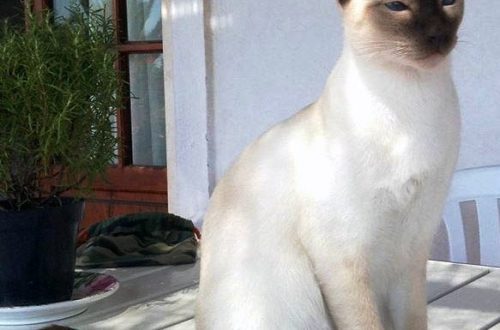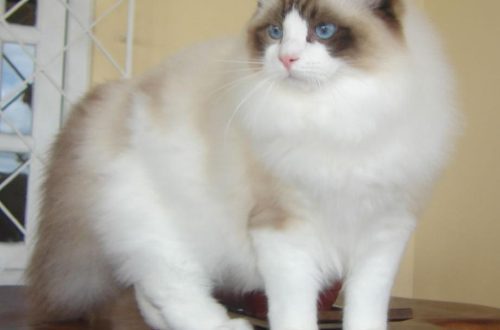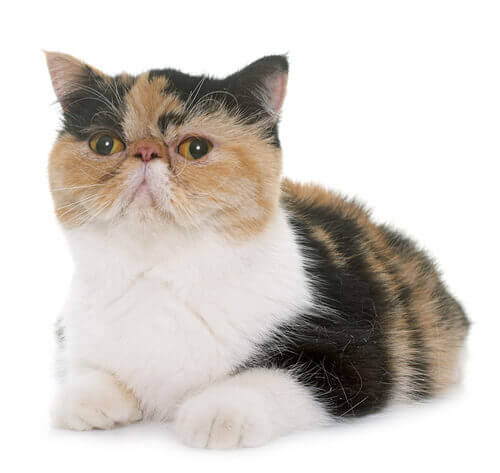
Exotic Shorthair
Other names: exotic shorthair cat , exo , exotic
The exotic cat is one of the most popular breeds in the world. The secret of her success is in her kind, friendly nature and, of course, a very sweet expression on her face.
Contents
- Characteristics of Exotic Shorthair
- Basic moments
- History of the exotic shorthair cat breed
- Video: Exotic cat
- Exotic Shorthair Appearance
- Photo exotic shorthair
- The nature of an exotic cat
- Exotic Shorthair Education and training
- Care and maintenance
- Health and disease of the exotic shorthair cat
- How to choose an Exotic Shorthair kitten
- Photos of exotic shorthair kittens
- How much does an exotic cat cost
Characteristics of Exotic Shorthair
| Country of origin | USA |
| Wool type | Shorthair |
| Height | 25-35 cm |
| Weight | 3-6.5 kg |
| Age | 12-15 years |
Basic moments
- The Exotic Shorthair cat is a fairly young breed, but it has managed to become popular all over the world.
- The animals were obtained by crossing the American Shorthair and Persian cats. The characteristic appearance of the Persian, combined with the plush structure of thick soft wool – these are the main features of the exterior of this amazing creature.
- Representatives of the breed get along well with children and other pets, willingly devote time to outdoor games.
- Exotics are peaceful, friendly and patient, which allows us to call the breed one of the safest for home keeping.
- Exotic shorthair cats are easy to train and even able to follow simple commands.
- Exotics are highly intelligent and highly trainable. They are distinguished by an increased need to be in society, which is not characteristic of many of their relatives. These cute creatures simply suffer from loneliness.
- Animals are unpretentious in maintenance and care, they are distinguished by quite good health.
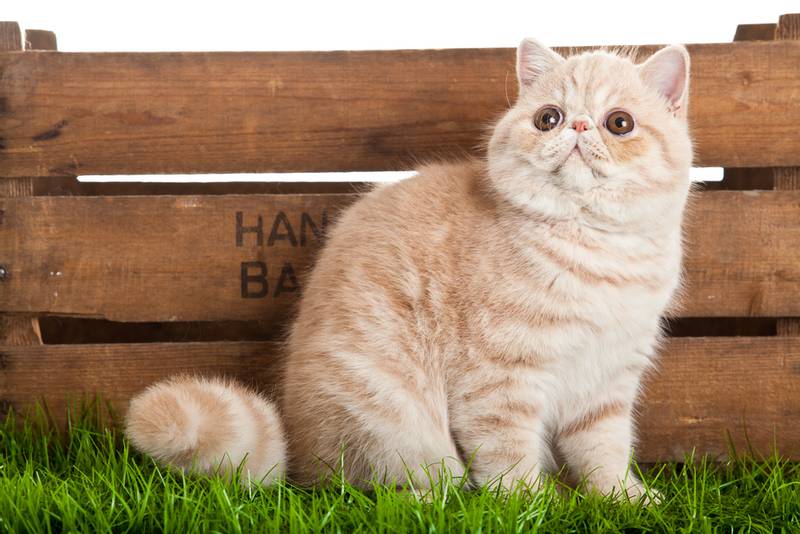
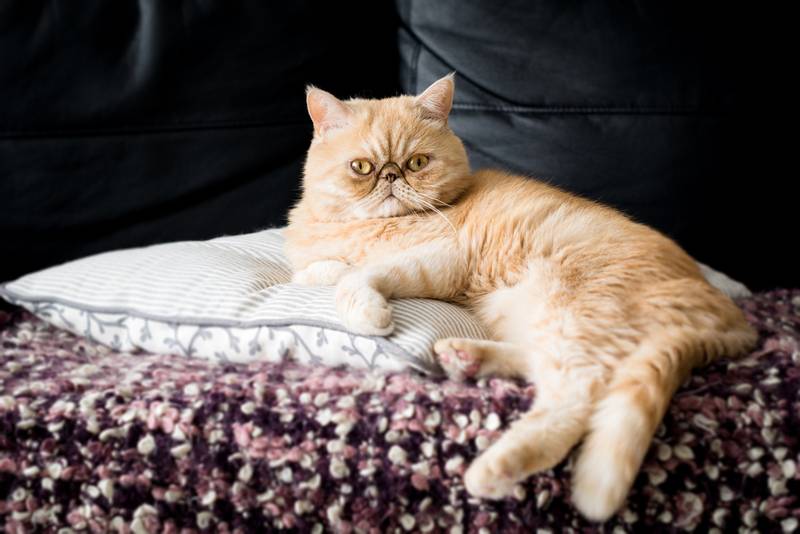
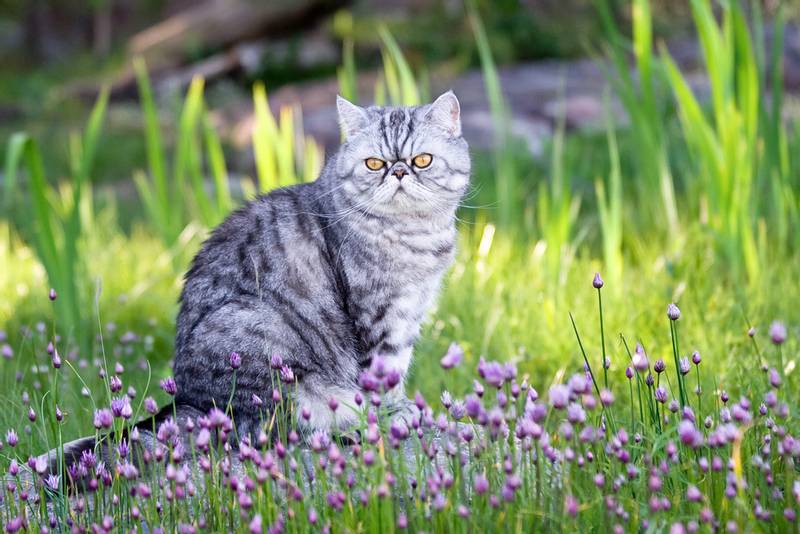
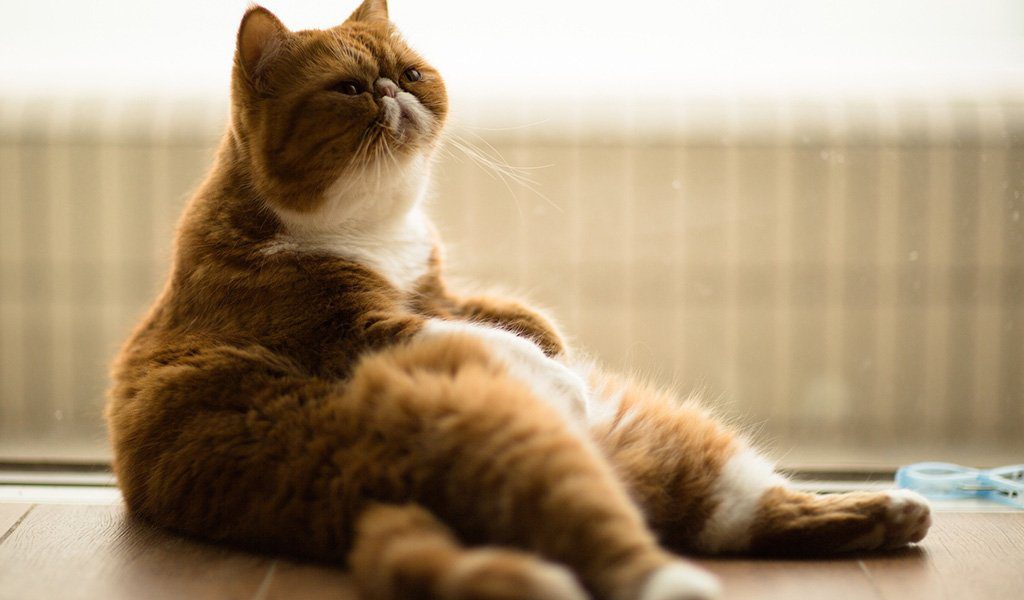
The Exotic Shorthair cat is a dream come true for many people, thanks to its large expressive eyes that make it look like an anime character, cute snub nose, round muzzle and plush fur. Exotics are like stuffed toys that you want to mess around with all day long! Due to their lively mind and natural curiosity, representatives of this particular breed become heroes of humorous videos with enviable regularity. Exotic cats are sociable and completely non-aggressive, so they are suitable for families with children or pets.
History of the exotic shorthair cat breed
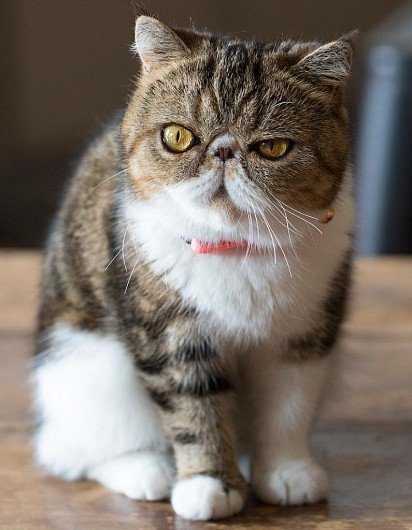
The appearance of the exotic shorthair breed dates back to the 50s of the last century. Frankly speaking, the first kittens appeared quite by accident. Wanting to get new coat colors and eye colors, American Shorthair breeders crossed their pets with Persian cats . Another goal of these attempts was to make the physique of “American women” more dense. The task was not solved. The offspring, to the surprise and disappointment of the breeders, turned out to be very “Persian” – all the animals were born with characteristic “doll” muzzles. And otherwise, the kids looked more like parents “from the East.” Only the coat has become noticeably shorter and has acquired a denser plush structure. As a result of crossing, it was not possible to improve the breed of the American Shorthair cat, but completely new kittens with outlandish appearance were born.
Already in 1966, Jane Martink introduced a new breed, which was given the name “Exotic Shorthair”. Recognition accidentally bred cats sought long enough. Ambitious breeders of “Persians” were critical of “exotics”, believing that they encroach on the purity of this breed. It got to the point that they refused to mate their elite pets with short-haired exotic ones, and they did it consciously and in an organized manner. Fortunately, there were also far-sighted owners of the “Persians” who saw the prospects and took part in the selection. Among them, Doris Valkinstik and Caroline Bussey should be especially singled out, whose merits in the formation of a new breed can hardly be overestimated.
Representatives of the Russian blue breed and Burmese cats were also used in breeding work . The experiments were stopped only when it was possible to firmly fix the gene for short hair. Since then, mating exotics is possible only with Persians.
In 1990, felinologists came to an agreement that the breed standard completely duplicates all the requirements for a Persian cat, with the exception of the length and quality of the coat. Based on these agreements, all changes that are made to the Persian breed standard automatically become relevant for the exotic shorthair cat.
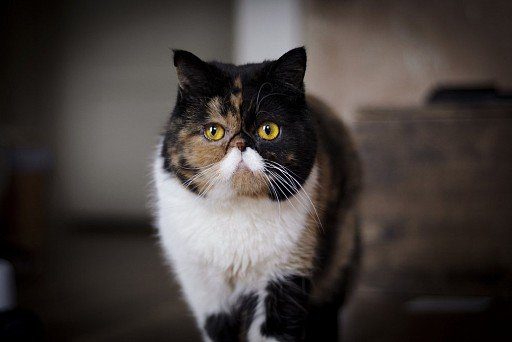
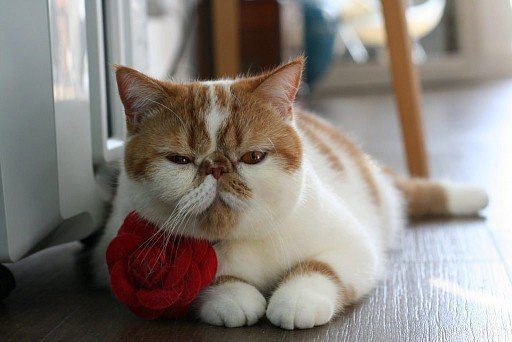
Video: Exotic cat
Exotic Shorthair Appearance
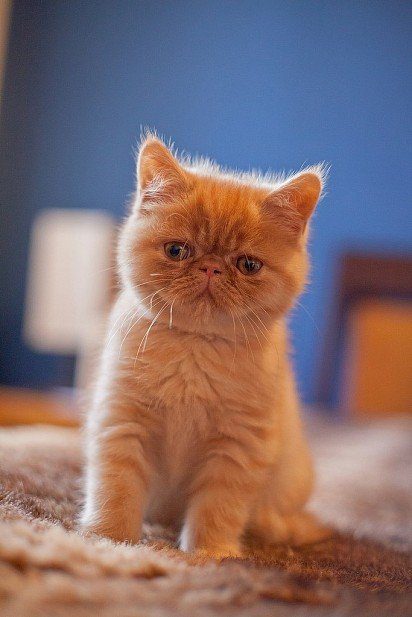
The ideal Exotic Shorthair cat looks like a well-balanced animal with strong, even somewhat heavy bones. The wool cover gives the outlines softness and roundness, the expression of the muzzle conveys complacency and calmness of character.
Head
Round shape, quite massive. The skull is very wide with a round bone structure. The chin is well developed, rounded. The jaws are strong and wide, the cheeks are full.
Eyes
The eyes of an exotic cat are located far apart on the same level. The shape is large and round.
Exotic Shorthair Ears
Small size, round shape. Set wide and low on the head, leaning slightly forward. The base is not very open.
Nose
Broad, short and upturned. “Stop” is located clearly between the eyes.
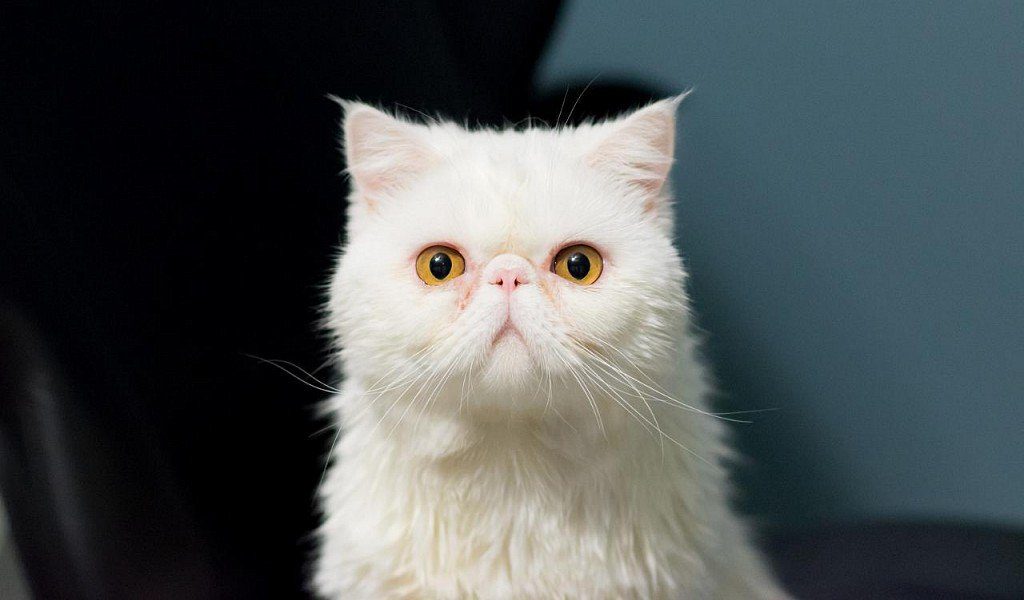
Body
The body of exotics is medium or closer to large in size. Squat, with well-developed muscles, without signs of obesity. The chest is wide, the shoulders are massive.
limbs
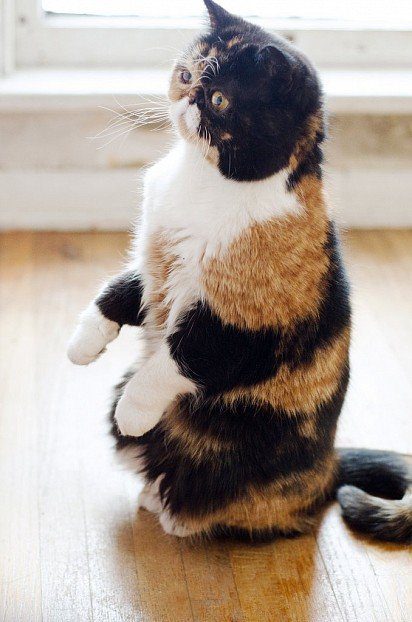
Strong, short, massive. Front – straight, rear – straight when viewed from behind.
Exotic Shorthair Paws
Paws of exotics are large and rounded. There are 5 toes on the front paws, 4 on the hind paws.
Tail
Proportional to the length of the body, although it is more likely to be defined as short. No bends. The animal is held at a level below the back.
Wool
The coat of an exotic cat is thick and plush, with a rich undercoat. Middle length. Feels very soft to the touch.
Disqualifying signs
Visible weakness of the hind limbs, tail defects, inappropriate number of fingers. Strabismus, asymmetry of the muzzle or head. Visible spinal deformities. White toes and non-blue eyes for color points.
Photo exotic shorthair
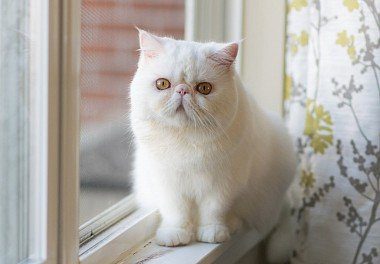
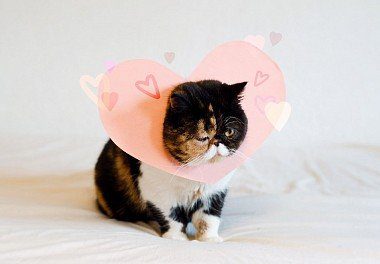
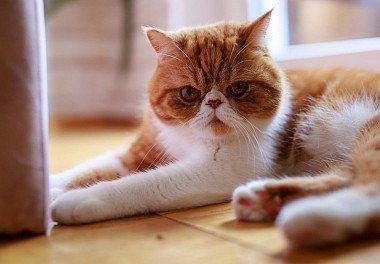
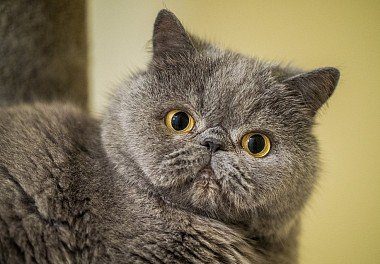
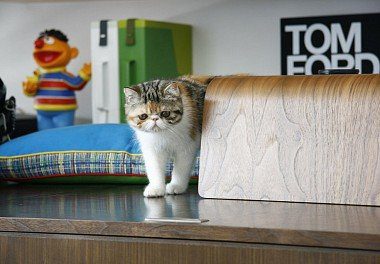
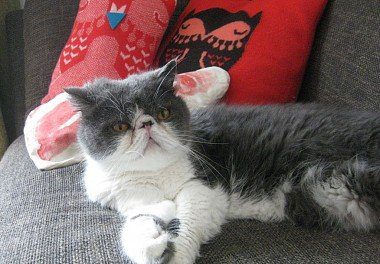
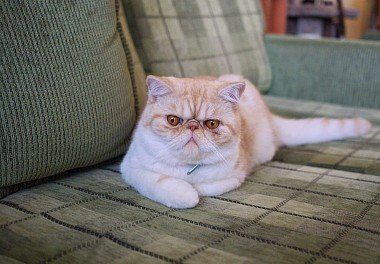
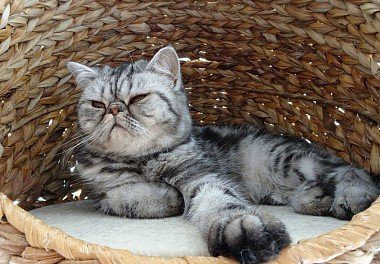
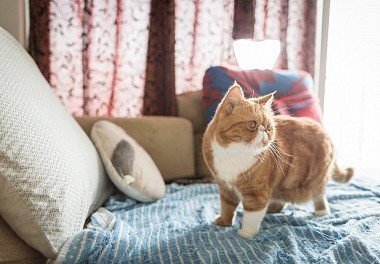
The nature of an exotic cat
The character of the Exotic Shorthair is surprisingly in harmony with her charming appearance. Friendliness, calmness and complaisance make this animal a wonderful friend and companion. Pets are capable of sincere affection for the owner, but they show their feelings so delicately and subtly that they cannot be called intrusive. They will patiently wait until you finish the business, and only then will they remind you of their presence with a gentle calm purr. Don’t forget to give your friend enough time, because these cats can hardly stand loneliness.

With such a “cartoonish” and even somewhat awkward appearance, exotics are quite active, inquisitive and mobile. Moreover, showing natural curiosity, cats of this breed are able to lose their sense of danger. To avoid unpleasant or risky situations, try not to leave your pet alone for a long time. Both kittens and adult animals differ in playfulness. Many owners of exotic cats also note that they have well-defined hunting instincts.
Adaptation of exotics to new conditions due to their accommodating nature does not present any particular difficulties. Your household, as well as pets already living in the house, will easily find a common language with this cute creature if they are set in a positive way.
Exotic shorthair cats have practically no manifestations of aggression – in order to get them out of a state of peace of mind and serenity, you need to want it very much. The manifestation of hostility, and even then in the form of attempts to avoid close contact, is possible only to strangers.
Relationships with younger family members almost always work out well. Exotics themselves love to play, and will gladly take part in children’s fun. You just have to control the degree of activity and safety of the game on the part of the “human cubs”.
From the point of view of a combination of character traits, temperament and intelligence, the Exotic Shorthair can rightfully be considered a cat ideal for home keeping.
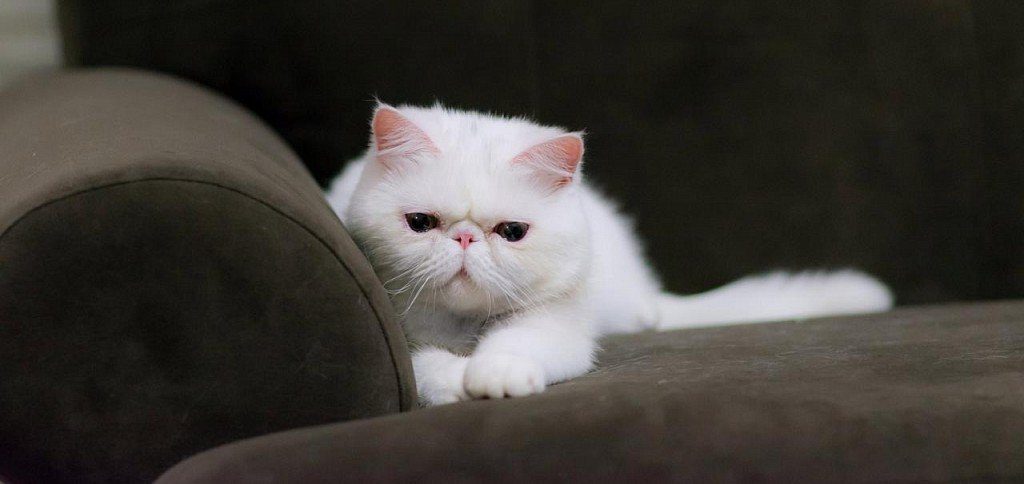
Exotic Shorthair Education and training
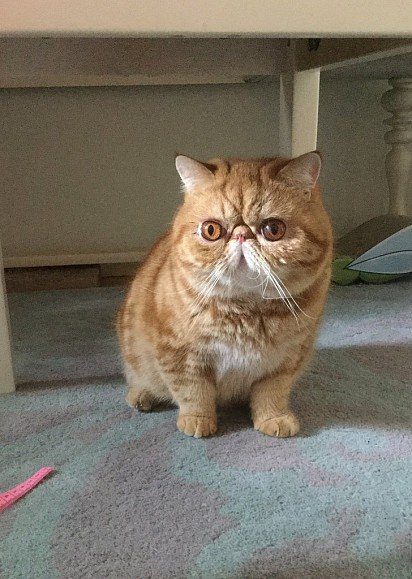
The Exotic Shorthair is highly intelligent, receptive and highly trainable. Practice has shown that exotics are able to remember simple commands and forbidding words. To achieve sustainable results, it makes sense to start training from the day you brought the kitten into the house. To simplify the assimilation of the simplest commands, you can accompany them with short exclamations or just clapping your hands.
The main rule of training is no aggression. The psyche of exotic cats is very sensitive, so you will not find a better method of education than love and patience. Forcing an Exotic kitten to do something through force, threats and intimidation will not only permanently lose his trust, but also cause serious harm to the health of the baby.
Educational moments – accustoming a kitten to a tray and a scratching post – usually pass without much difficulty. It is better to place the toilet in a quiet place where no one will distract your pet from his affairs. And so that the baby quickly understands the purpose of the scratching post, try spraying it with valerian tincture or a special product purchased at a pet store.
Care and maintenance
The Exotic Shorthair cat is an absolutely unpretentious creature. Professional hair care is not required, which is why representatives of the breed are sometimes called “Persians for the lazy.” But this does not mean at all that it is not necessary to care for a fur coat. Exotic coat is very dense, voluminous, soft and well balanced with a soft undercoat. In order for the coat to look healthy and beautiful, it should be combed out two or three times a week with a special high-quality metal comb. Like other felines, exotic shorthair cats look after their appearance by licking themselves, so experts recommend having products in the veterinary medicine cabinet to remove hairballs from the stomach.
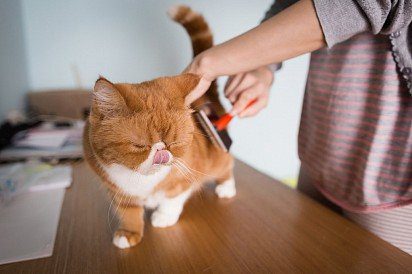
Exotics need systematic bathing, at least once a month. The structural features of the muzzle of the animal require careful and attentive care – wipe it daily with a damp cloth, pay special attention to the condition of the eyes and lacrimal ducts, as well as the cat’s nose. Twice a month, do not forget to trim your pet’s nails with a safe nail cutter. It is unnecessary to remind about the mandatory presence of a scratching post.
Give your pet a comfortable, safe place to rest in peace. If this is a house, then purchase it in such a way that the animal has enough space to lie down, curled up in a ball or stretched out to its full length. Settle an exotic cat closer to you – the pet does not tolerate loneliness. Some members of the breed are very fond of sitting or lying on cool surfaces, such as tiled floors, for long periods of time. To prevent the animal from catching a cold, try to limit the time for these “cooling” procedures.
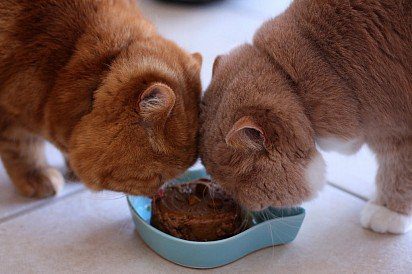
If you do not live on the first floor, make sure that there are protective nets on the windows. Exotic shorthairs are large animals, in some ways even obese, and a fall from a height can lead to the most serious consequences.
When solving the issue of catering, remember that adult animals are prone to obesity. To avoid such problems, already “from an early age” teach your pet to the right balanced diet. Immediately taboo on fatty foods and goodies from the common table. The diet should be based on protein products in an organic combination with cereals, vegetables and vitamin complexes. The use of premium dry prepared food from leading manufacturers is completely acceptable.
Important: if you use both dry food and natural products, then never combine them. Alternate – you can, mix – no!
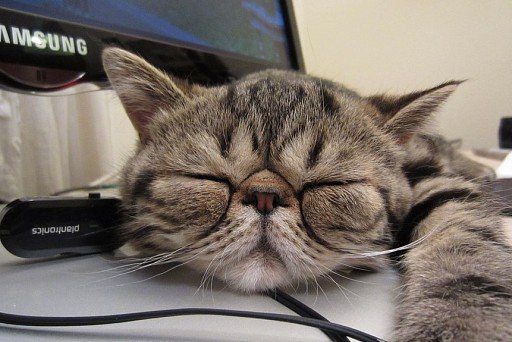
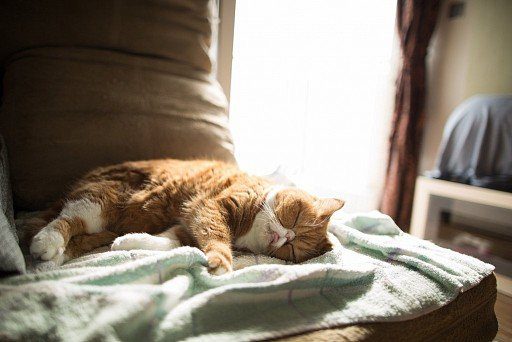
Health and disease of the exotic shorthair cat

The Exotic Shorthair is an artificially bred breed, which in essence is no different from its relatives, the Persians (with the exception of the length and structure of the coat). It is absolutely logical that the genetic diseases in these two breeds are almost identical.
Most often, exotics have diseases of the respiratory system and eyes. The reason is obvious – the unusual structure of the muzzle and the associated deformation of the nasolacrimal canal.
There is a clear genetic predisposition to kidney disease and cardiomyopathy. The latter disease very often causes the death of animals of this breed at an early age.
The exotic oral cavity can also be considered a risk zone, and a rather high one. In the absence of proper care for the gums and teeth, gingivitis, periodontal disease and other inflammatory diseases may occur. Sometimes cats develop the lower jaw incorrectly, which can lead to problems with eating.
The best prevention of the occurrence or complex course of these and other diseases is proper care and careful monitoring of your pet’s condition. Timely vaccination, deworming, preventive examinations in a veterinary clinic – all these simple measures will help you avoid unnecessary problems and keep your exotic shorthair cat healthy for many years.
How to choose an Exotic Shorthair kitten
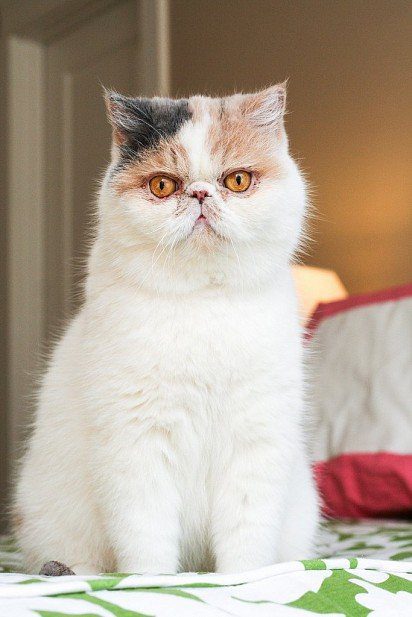
Life shows that in most cases we buy a cat “for the home, for the family”, so often the main selection criterion is personal sympathy. If you are planning to buy an exotic to participate in exhibitions or want to seriously engage in breeding the breed, then the selection criteria will be much stricter – it must be a breed or show class kitten, from titled parents with the relevant documents.
However, in both cases, you must carefully evaluate the external indicators of the baby’s health: feel the tummy, look into the ears, mouth, and even under the tail of the animal. It is useful to observe the behavior of your chosen one for a while in order to make at least rough assumptions about his temperament.
You should be aware that the combination of some signs in kittens of an exotic breed may indicate the presence of genetic problems. For example, a blue-eyed creature of white color with a high degree of probability may suffer from hearing loss, or even be completely deaf.
We do not recommend buying a baby who is not yet 3-3.5 months old. By this age, as a rule, breeders complete the first routine vaccination, including the period of mandatory post-vaccination quarantine. Kittens at this age already have certain hygiene skills, and their gastrointestinal tract is ready for the transition from mother’s milk to “adult food”.
Before buying an exotic, you should familiarize yourself with the features of the breed, all its pluses and minuses, in order to make the right choice.
Photos of exotic shorthair kittens
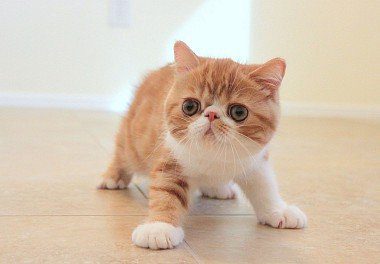
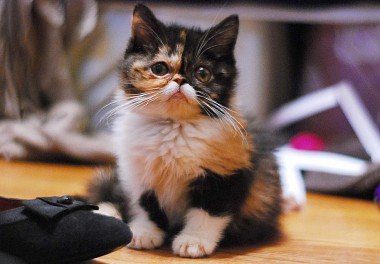
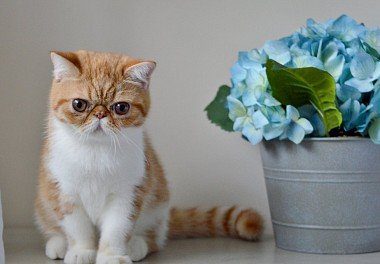
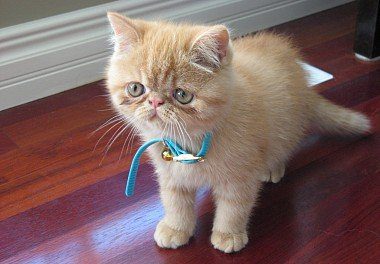
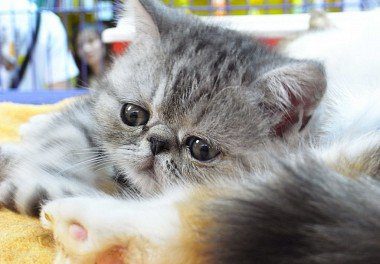
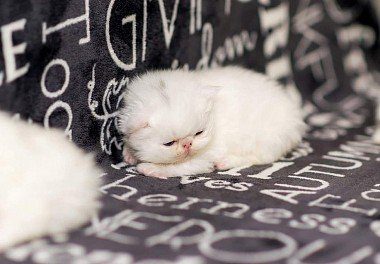
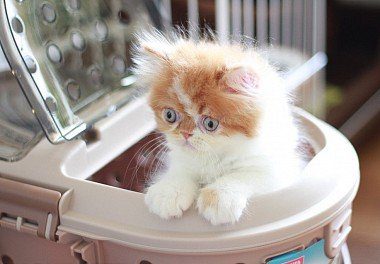
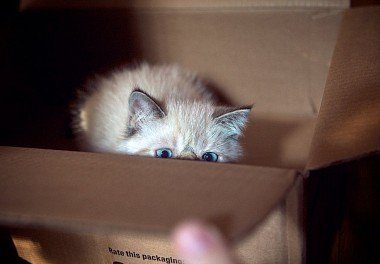
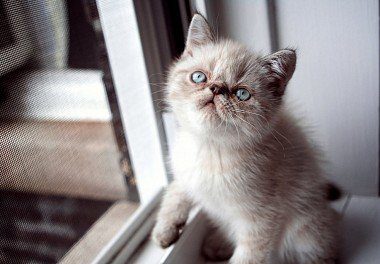
How much does an exotic cat cost
The price of an exotic kitten depends on several components. These include:
- compliance with the breed standard;
- “purity of blood” – the more elite the parents, the more expensive the kittens;
- color, its rarity and fashion;
- scheduled vaccination.
Prices in professional nurseries are objectively higher than those of private breeders. Even cheaper exotics can be bought via the Internet or in the bird market. Although in the latter case, a certain cheapness is more than offset by the possible numerous risks. There are even known cases of the sale instead of an exotic shorthair of a simply trimmed Persian kitten.
We recommend contacting trusted breeders or nurseries, where the average price of an exotic shorthair kitten, depending on the class, can range from 150 to 900$.



